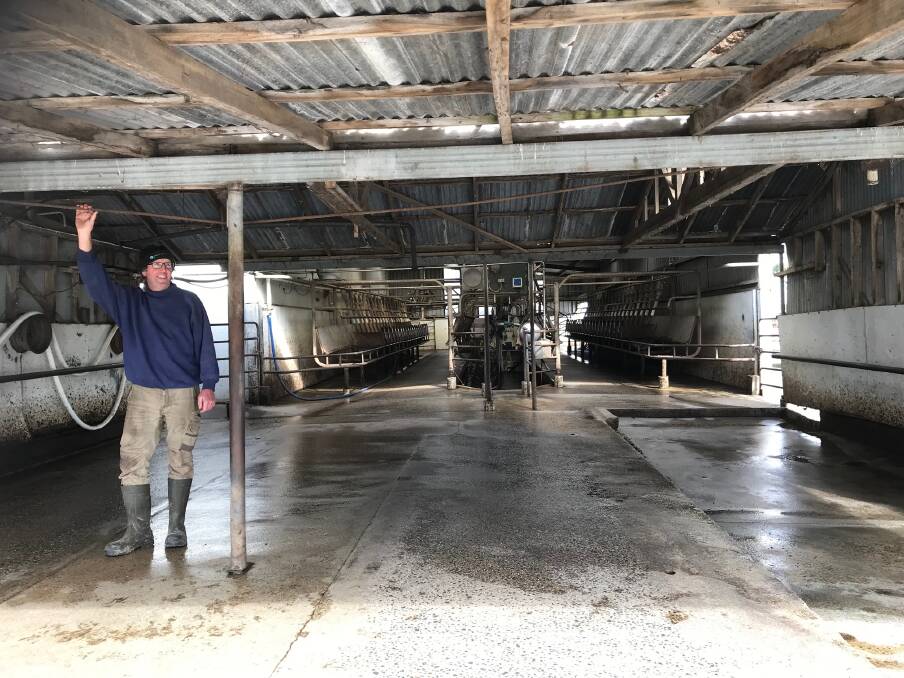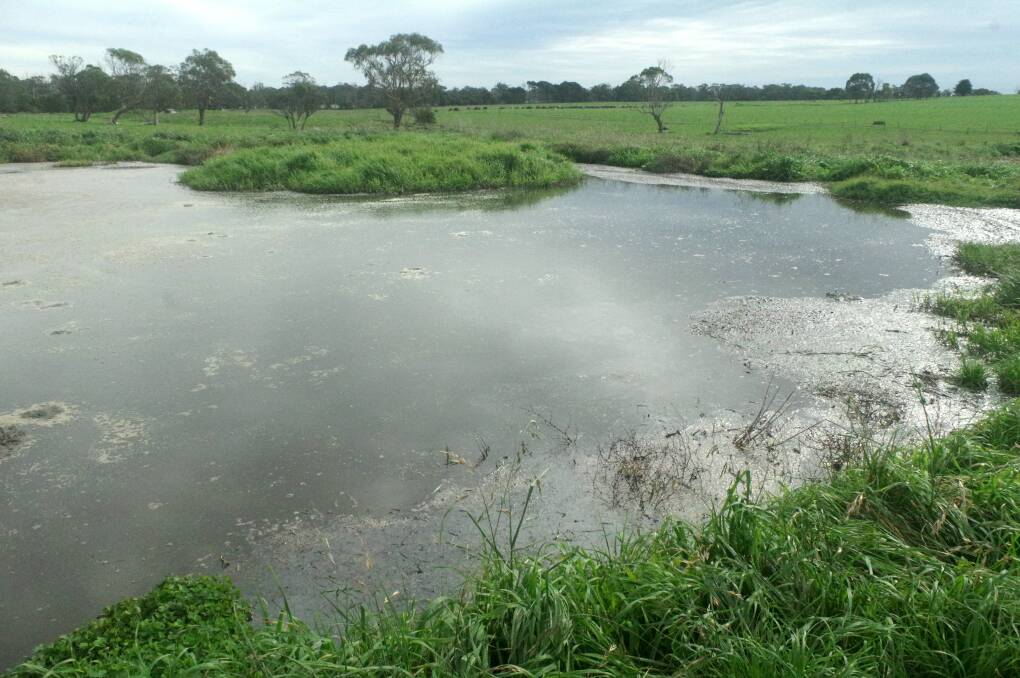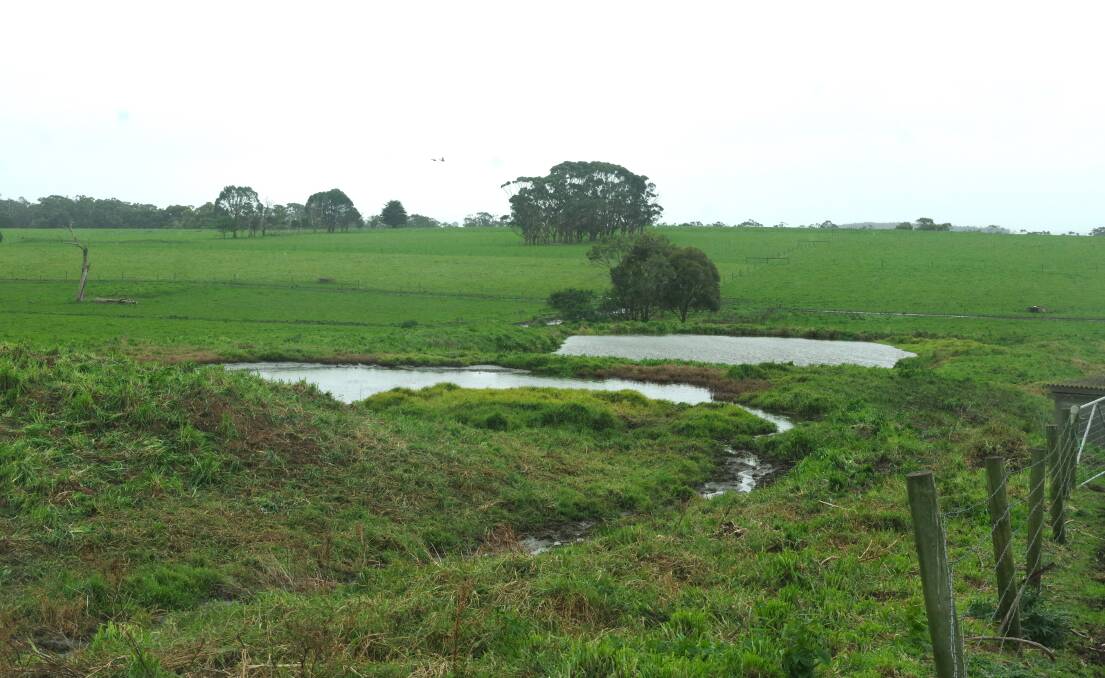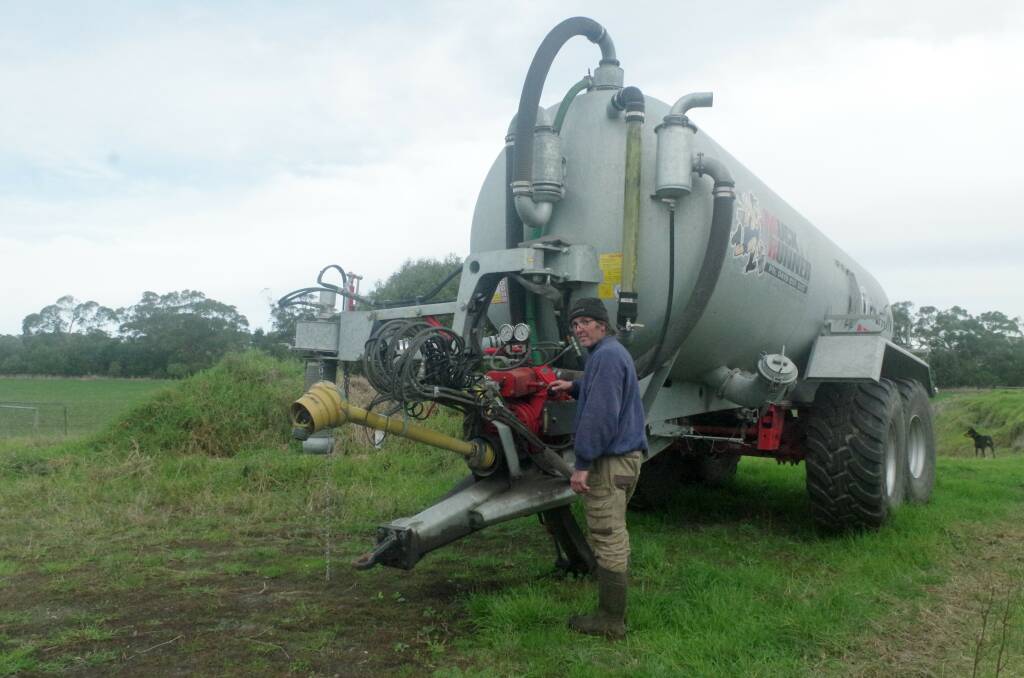
Peter Young, a dairy farmer at Buffalo, in South Gippsland, has welcomed Environment Protection Authority (EPA) input into redesigning his effluent system.
He has expanded its capacity once already, and is looking to double that capacity after his builds new sheds and increases the roof line.
Mr Young utilises biological agents to break down the slurry in his effluent ponds, and he distributes the liquid on his pastures.

But Mr Young's concern about the site of the effluent ponds on his property, combined with his own environmental ethics, saw him turn to EPA officers for advice.
That has led to whole farming planning that identifies the contours of his land, the risk of overflow to his paddocks and a nearby creek, and analysis of the effluent in his first and second ponds.
From pond one, the analysis indicated he could apply one megalitre of effluent over 6.2 hectares, which would apply nutrients at a rate of 60 kilograms/ha potassium, 16kg/ha phosphorous and 45kg/ha nitrogen.
From pond two, the analysis indicated he could apply 1ML over 9ha, which would apply nutrients at a rate of 60kg/ha potassium, 6kg/ha phosphorous and 16kg/ha nitrogen.
These rates were substantially lower than when he applied urea, single superphosphate or muriate of potash.
Combined with a slurry truck, Mr Young has clearly identified using effluent as a pasture fertiliser as a priority for its cost-benefit analysis.
He has already increased the capacity of his effluent ponds, but is looking to double that capacity again.
"The original capacity of the first pond was only 130 cows," Mr Young said.
"I enlarged and deepened it for 280 cows. It now has a capacity of 1.6ML
"The second pond was enlarged for more storage and has a capacity of 4ML. It's the effluent from pond two that I spread on the paddocks."

The total volume of effluent produced each year from the second pond, for applying to his paddocks, is 5ML. It is applied using a 10,000-litre slurry tanker.
Mr Young wants to increase the storage capacity again, by adding two more dams to his farm's effluent storage system. To do this will require significant earthworks, but it will also make the infrastructure safer.
He is aligning it with his plans to increase the roof of his dairy shed, and build a compost shed that will double as a new calf shed. The current dairy shed has a roof capacity of 420 square metres.
It will also enable him to provide an undercover area for his milking herd to shelter in extreme weather.

The current yard area is 153 cubic metres. Yard collection of gravity fed washdown goes into a double pond storage system.
The water used in the plant and yard washdown is collected from rain water on the shed roofs and backed up by dam water.
Currently, based on an annual rainfall of 970mm, the shed roofs harvest 387,030 litres of water annually.
Mr Young said the new earthworks would enable two additional effluent ponds to be built. Underground pipes would link pond one to three and pond two to four.
His construction plans include a new laneway. This will allow a large tractor and the slurry tank to be parked alongside the extraction ponds, without impeding the progress of cows to pass on their way back to the paddock.

"The priority of the new set up is safety," Mr Young said.
He has sought input from EPA and its partner agencies over many years. His proof is in a box full of reports that analyse and assess the effluent ponds and key assets in the farm's operation.
"They assessed the existing ponds. There's no seepage," Mr Young said.
"The ponds have clay walls and that has helped create certainty around the safety of the existing structure."
Tied to this, Mr Young spent many years revegetating the paddocks alongside the creek that is south of the dairy on his property, to provide stability against flood events.
Want to read more stories like this?
Sign up below (select Dairy News) to receive our e-newsletter delivered fresh to your email in-box twice a week.


